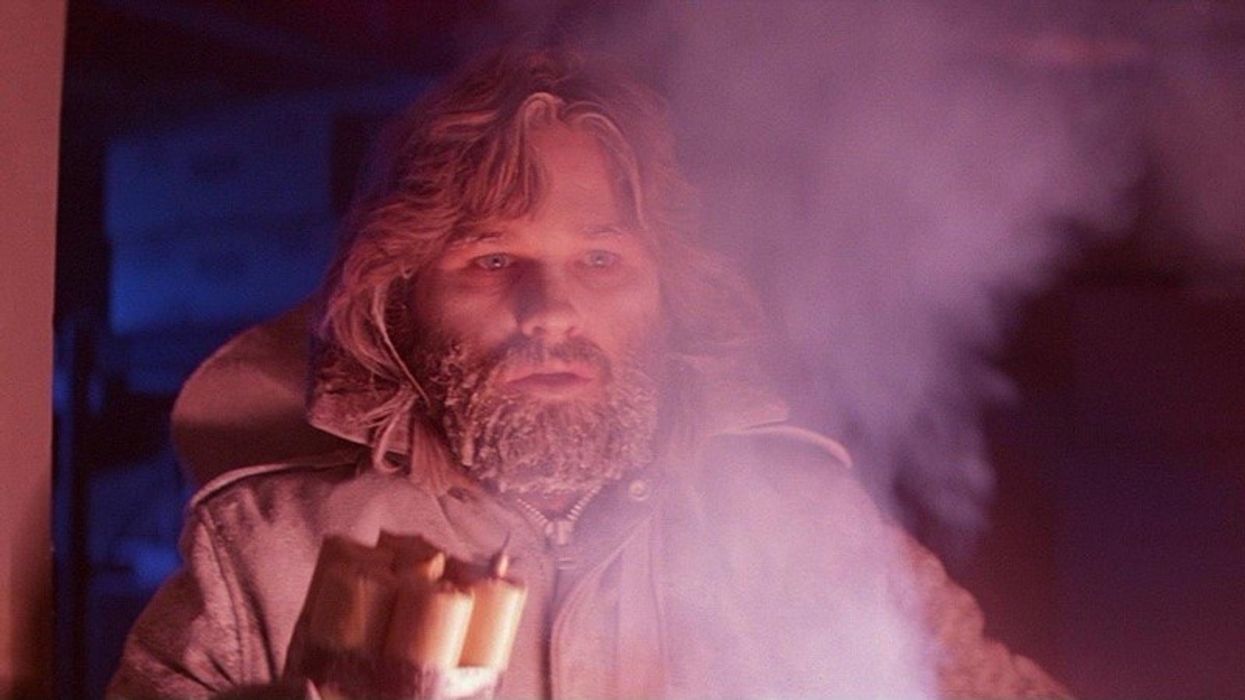This Is How Dean Cundey Created Terror in Each Frame of 'The Thing'
Terror is one of those feelings that lingers, but how can you create in-frame terror that is effective?

Few films capture the essence of isolation through the film’s cinematography as well as John Carpenter’sThe Thing. Those long, dusty corridors, that relentlessly creeping camera, and the almost surreal wide landscape shots of the vastness of Antarctica—it's amazing.
Cinematographer Dean Cundey, one of the most prolific and talented cinematographers of all time, hones in his ability to create a distinct, smoky naturalism that transports the audience into a world that feels slightly askew from our perception of reality. It sits just outside of the mainstream, pushing the limits of surreal realism, creating breathtaking cinematography that puts the audience in a vulnerable state of awe.
The visual beauty of The Thing continues to influence young filmmakers through Cundey’s ability to keep the tension constantly in the frame through the brilliant use of visual design and wide camera angles that isolate each character.
In an interview with American Cinematographer, Cundey revealed that he and Carpenter were very interested in a technique that would force the audience to experience the atmosphere as if they were the characters that were experiencing it.
“We wanted to create an unsettling mood even before anything bad happens,” Cundey said when asked how he was able to use negative space to give the impression that something or someone might be lurking just off-camera.
Part of this just out-of-frame dread was established by the dog. The dog is not just sitting in one spot, acting like a normal dog. Instead, there is an odd sense of light, and the slow camera movement makes the dog’s sitting feel intimidating as if he is watching something just outside of our sight. Cundey took advantage of that slow camera motion to create a feeling that something was lurking out of frame from the beginning, establishing a sense of impending doom from the start.
When it came to the composition of The Thing, Cundey used an anamorphic aspect ratio to get beautiful wide shots.
Many of the directors Cundey was working with before The Thing resisted the anamorphic aspect ratio simply because they wouldn’t be able to get close-ups of the actors. Carpenter believed in Cundey’s vision and trusted that the wide aspect ratio could place the characters in an environment, establishing feeling through the frame rather than relying heavily on the performances.
“Even when we weren’t using the frame to imply that something might be about to happen… we were using it to create a whole world,” Cundey said. “There are these big wide vistas at the beginning, but with the snow and the mountains and things in the foreground, we still made the frame claustrophobic and used it to confine the characters.”
To add another layer of claustrophobia to the frame, Cundey wanted to create a strong sense of coldness that made the characters seem frozen in place, unable to escape the terror surrounding them. Cundey often lit the interiors with a warmer light so the audience would notice the difference from the exteriors, which Cundey kept in blue tones.
“I found these very intense blue lights used on airport runways: they were balls covered with a very blue glass envelope, and they threw off an otherworldly blue light,” Cundey said.

The interiors were lit with overhead lights with conical shades that allowed the crew to control the light and limit how illuminated a room was. The rooms could still have areas of darkness while the characters were illuminated, allowing Cundey and the crew to shape the light to create a specific mood.
The complete control of the lighting, framing, and composition allowed Cundey to create a hauntingly beautiful world that lingered on that uneasy feeling of complete and utter isolation. The Thing is riddled with terror and dread, and that is why we love it. We can’t stop admiring how smart the direction and cinematography choices are, and it inspires us to trust our visions and never stop pushing the boundaries of traditional filmmaking.
What is your favorite shot from The Thing? Let us know what it is and why you love it in the comments below!
Source: American Cinematographer











